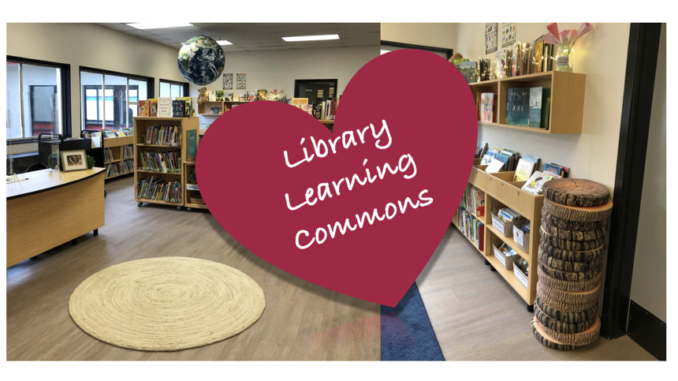
By Kelly Johnson
Four years ago, I landed in my dream job. After 23 years as a classroom teacher, I had completed my library training and become a teacher-librarian at the very same elementary school where I had spent my teaching career. I was overjoyed to be in this role and eager to create a space that would engage the hearts and minds of our 325 students.
Our library, built in 1948, was already well-loved by staff and students, but it had not been the subject of any significant updates. The space had obvious and exciting potential. It was a large rectangle with plenty of square footage that could offer the opportunity for multiple zones for teaching and working. Its location in the very centre of our school made it a natural hub for student activity. It featured an abundance of natural light coming through three expansive windows overlooking a courtyard. The courtyard was the beginning of our innovation journey.
“If You have a Garden in your Library, Everything will be Complete.” (Cicero)
In my first year, I experimented with ways to make the most of the existing space. The courtyard was our first school-wide library project. Funded by an innovation grant (more about that later) and in collaboration with every classroom at our school, we took the space, which had been used as a storage area, and created a garden. Students carried in yards of soil, and then river stones, in small buckets. They dug and planted, raked, and weeded. Together, we planted indigenous-to-BC ferns and flowers, built pebble walkways, and added picnic tables, weatherproof cushions, and even made a miniature Zen sand garden. This space became a natural extension of the library and a favourite place for students to read, work, and garden.

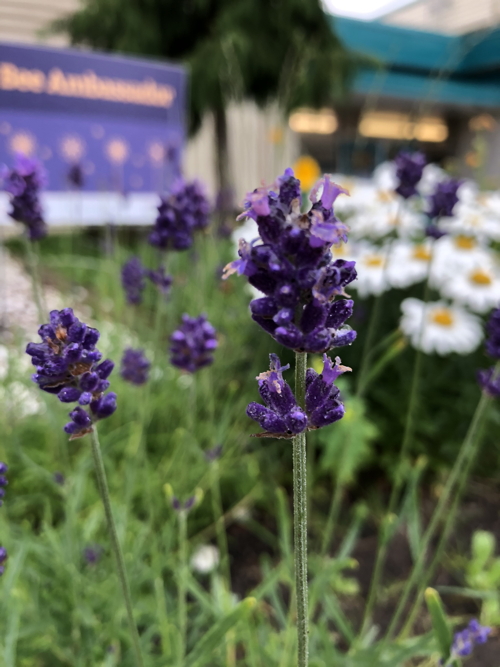
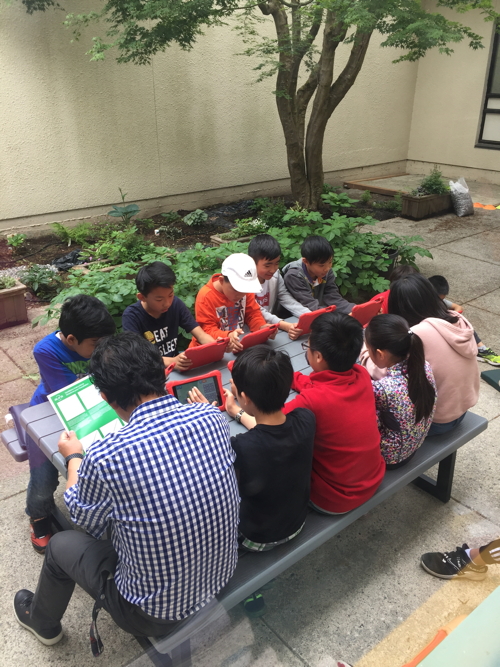
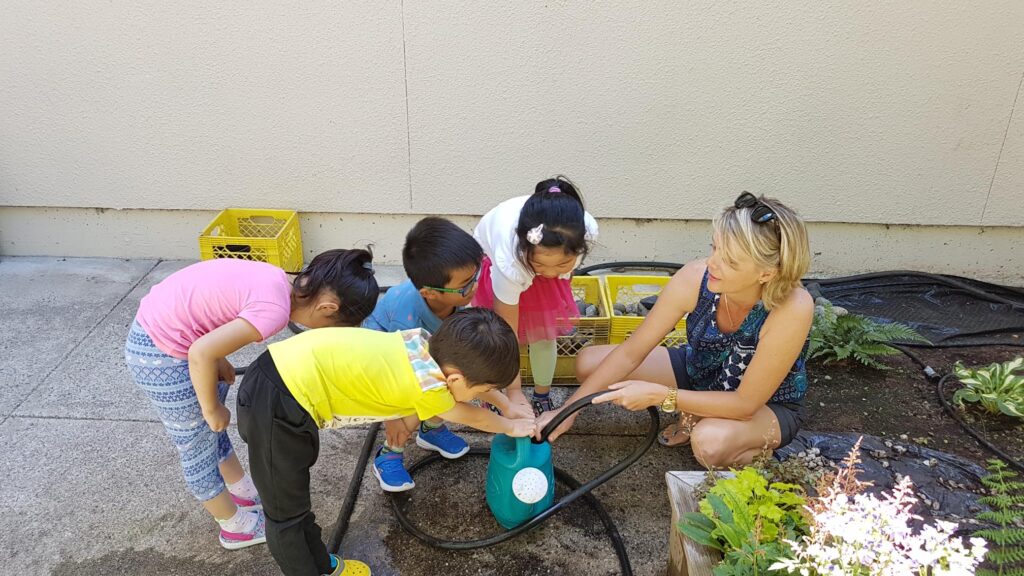
Inside the library, new area rugs covered the worn wall-to-wall carpeting to help make it feel cozy. Making a warm and welcoming space was a priority because it was the number one thing that students had asked for when I surveyed them during my initial scanning phase. The students loved the new soft seating and cozy reading nooks. I was hearing from teachers that their kids could not wait to come to the library!
Zones which would support distinct types of learning spaces were created by moving tables, area rugs and seating into groupings – each zone was designed with as much flexibility as possible, but the various built-in furniture and shelving created limitations. The oversized circulation desk and student computer workstations were occupying a sizable percentage of the library’s space and offered no flexibility as they were permanently secured in place. The fixed furniture meant that I was not able to re-configure the space to support the kinds of activities that our library program was developing. Our new 3D printer had no permanent space, the students’ work tables were heavy and impossible to move by myself, and the 30 chairs were weighty and cumbersome to stack each day and they also were taking up more than their fair share of space.
The rigid furniture layout was impacting our library’s ability to move towards a true library learning commons. Our students deserved a space that would be able to transform quickly and efficiently into the learning environments they wanted and needed. I wanted to be able to go from a yoga session with the grade one students to a 3D printing workshop with the flexibility to re-arrange the space single-handedly.
A Collaborative Process for a Collaborative Space
My school district, Richmond, BC has a progressive program of grants to support innovation. After my initial exciting and positive experience with an innovation grant in the courtyard, I was excited at the possibility of turning our attention to changing the structure of the library. With support from our District Library Coordinator, I applied for a significant Learning Environments Grant. What followed was an iterative process of exploration and idea development. The grant application process required clarity about the goals of the project and a plan for how the investment would support learning and innovation.
The innovative aspect required a vision, but the vision had to be informed by the attributes of the site, the needs and preferences of the school community and the budgetary implications of various design options. In our district we lean into the Spirals of Inquiry model (Kaser & Halbert, 2017). Innovative direction is grounded in a cycle of inquiry that starts with the question, “What is going on for our learners?”
Our inquiry began with student voice. After the initial stages of scanning and developing a hunch, we turned to action. The students helped me plan for a space that would match their ideas for a ‘perfect’ library. They provided the many ideas and suggestions that eventually became the heart of our design blueprint. They asked for specific things such as comfortable seating, cozy reading nooks, clean and uncluttered spaces, new books, and more technology that they could use. Really, they were asking for choice!
Plan Spaces for everything you and your students dream of doing in the LLC:
- 3D Printing programs
- Greenscreen filming and Podcasting
- Book Clubs and Lit Circles
- Games zone
- Clubs
- Makerspaces and STEAM activities
- Mindfulness, Yoga,
- Author visits
- In-school field trip presentations
- First Nation, Metis, and Inuit artist workshops
Our new learning objectives emphasize the importance of student engagement and input. It was important that both the creation process and final product of our LLC mirrored these values by hearing and honouring our students’ voices. Many more brains were united in consultation – our district carpenters and mill working folks, our District Library Coordinator Rebeca Rubio, administrators at the school, the staff and of course – the students. This was a collaborative project on all levels. All voices were heard, and ideas were added.
Begin with the End in Mind
Drawing from the data I had gathered using the spirals of inquiry, and armed with copies of Leading Libraries Standards of Practice (CSL), and From School Library to Library Learning Commons: A Pro-Active Model for Educational Change (BCTLA), I created lists of everything the new space would need:
- Spaces for quiet work and reading
- Spaces to support students working with technology
- Robust infrastructure to support the kinds of technology we envisioned
- Spaces for story making and storytelling with loose parts
- Spaces to accommodate large groups for presentations
- Spaces for display (both student work and books!)
- Spaces that could transform quickly and easily by incorporating mobile carts and shelving with wheels
As this list of needs grew, it became apparent that the entire footprint of the library would need to change to accommodate our vision. The existing circulation desk and student computer workstation were both massive and immobile. They would need to be removed and replaced with much smaller stations so that we could create the larger and flexible zones we dreamed of. We realized that the carpeting would need to be replaced because it is exceedingly difficult to roll bookshelves on a carpeted surface.
Now, if you have ever undertaken a large-scale renovation then you know that into every reno a few surprises will always appear! The carpenters explained that the bracket shelving no longer met the standards for earthquake proofing and the wiring would need to be updated to support the mounted projector and Apple TV. The scope of the project grew as these practical and necessary upgrades needed to be included in the project. To our advantage, they were completed simultaneously, and the district found practical ways to ensure that the changes required to meet building codes did not absorb the grant money essential to achieve the original vision.
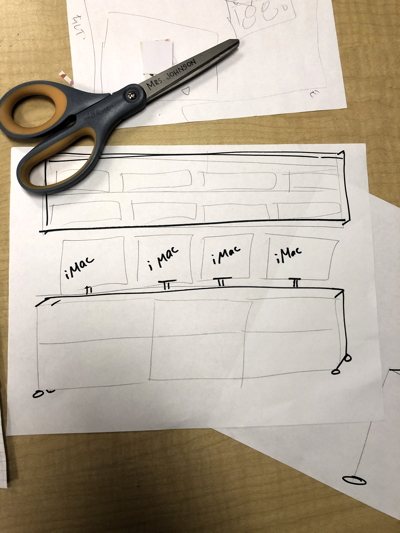
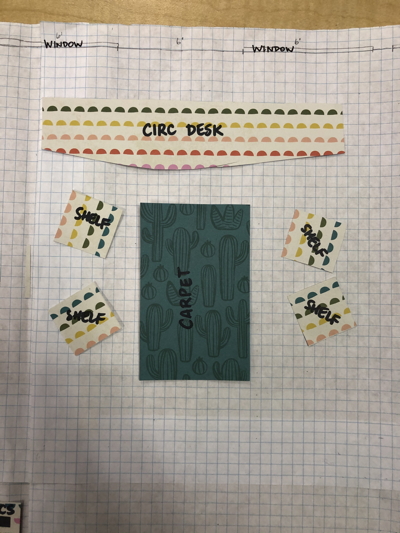

The Devil is in the Details: By creating a grid-paper layout of the library and cutting to scale the potential pieces of furniture, I was able to play around with various layouts. This was an invaluable process! It is much easier to shuffle paper circulation desks around on graph paper than to move the actual heavy furniture. It is important to measure and create furniture templates to scale to get a sense of the size and proportion of the pieces.
Ground breaking – Breaking Ground!
The time leading up to the start of construction felt long, but there was a lot to do to get ready. The first step was a major project to de-clutter the space so that there would be room for the new equipment and new uses of space. For example, the design required a 16-foot span to be cleared from the non-fiction area of our library to make space for the mounted projector and whiteboard. This meant weeding, weeding, and more weeding! I took this as an opportunity to weed the picture books and novels at the same time, with the idea that making hard choices early would result in packing fewer boxes to be hauled out and then back into the finished library. The 20,000+ book collection (after weeding) was going to be hard enough to move: I wanted every item which would be coming back into the library to be included very intentionally.
In April 2021 we moved back into our brand-new, beautiful space. The planning and consultations had paid off with rich dividends. The space was infinitely flexible in its design. By myself I could move and rearrange the wheeled bookshelves and tables. The stools we had opted for to reduce their square-foot storage footprint were a huge hit for the students. All our technology had a permanent home at our Genius Bar. The kids were ecstatic! Their ideas had come to life in the new space. It was more than I had dared hope dream. When I went back to review the list of wants and needs that we had developed in our planning stages I could see that our library really had made the journey to a proper library learning commons.
Following is a gallery of photos that highlight the step-by-step process and our thinking as we moved through our library’s transformation:
Before:
We made the most of what was existing with cozy zones for reading, researching, and learning together. A student-led collaborative mural (based on The Dot by Peter Reynolds) welcomed students with the message “Each of us is Part of Something Bigger.” Our courtyard became a natural extension of the space and together we created an outdoor learning area.

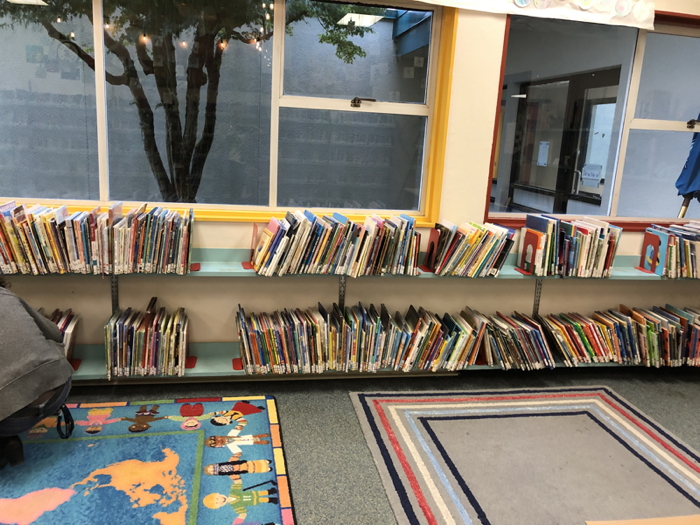
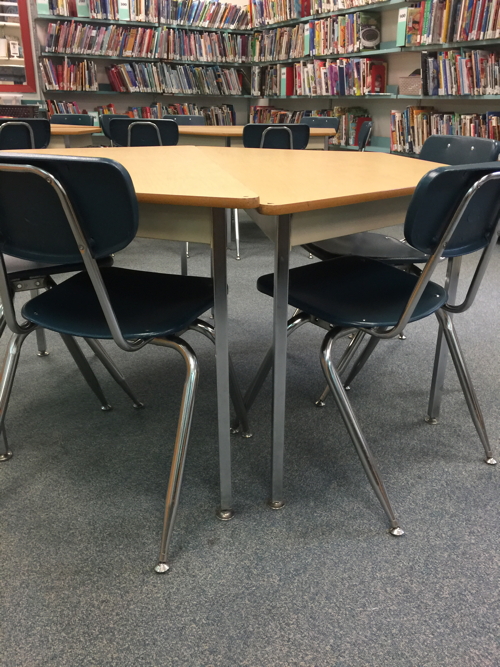
While the additions of art and cushions went a long way to making the space welcoming and cozy, they did not help with the rigid layout of permanent furniture that was consuming much of the square footage. In removing the two large desks we gained many square feet that were used to create a variety of zones for learning.
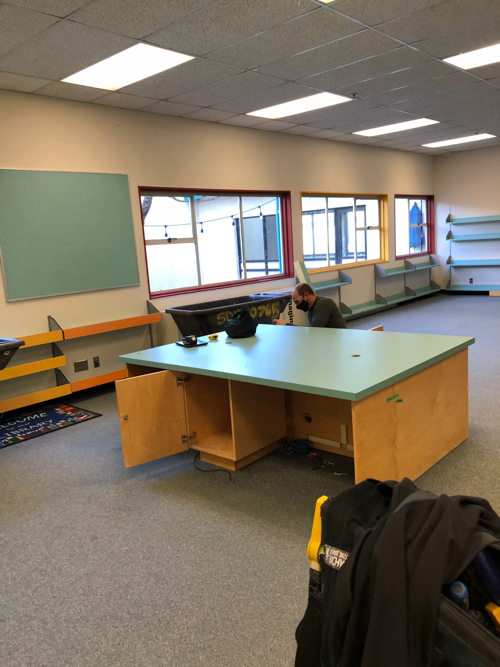
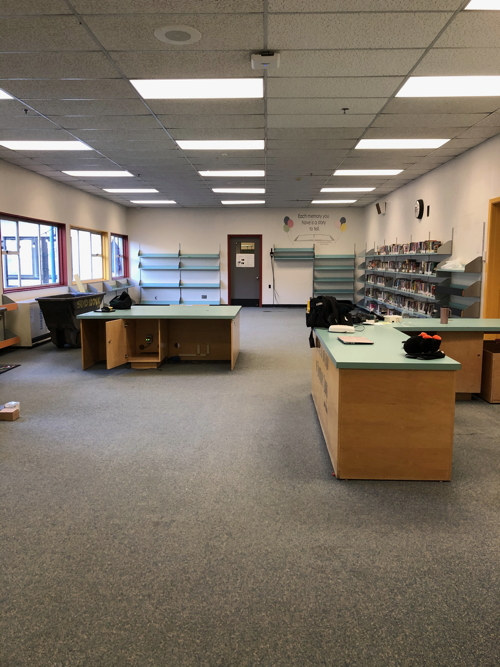
After:
In planning our new and flexible learning space, we were deliberate in our design details. For example, we chose stools instead of chairs: they are lightweight and stackable which reduces their footprint. Wheels on carts maximize their mobility and allow the space to be instantly transformed into infinite layouts. A palette of earthy, calming colours suggests the natural earth, water, and land.
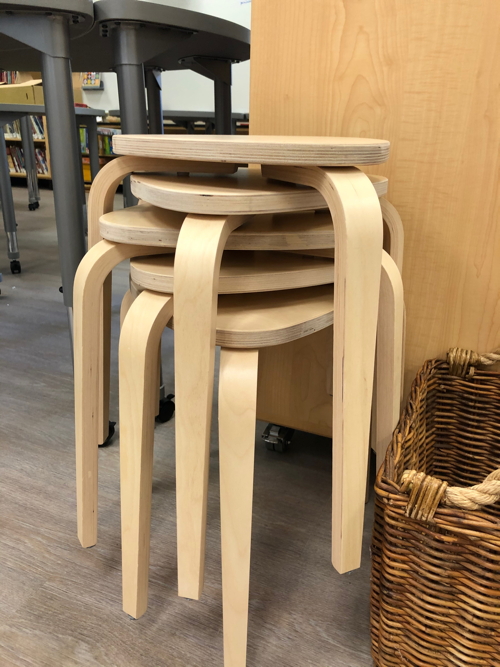
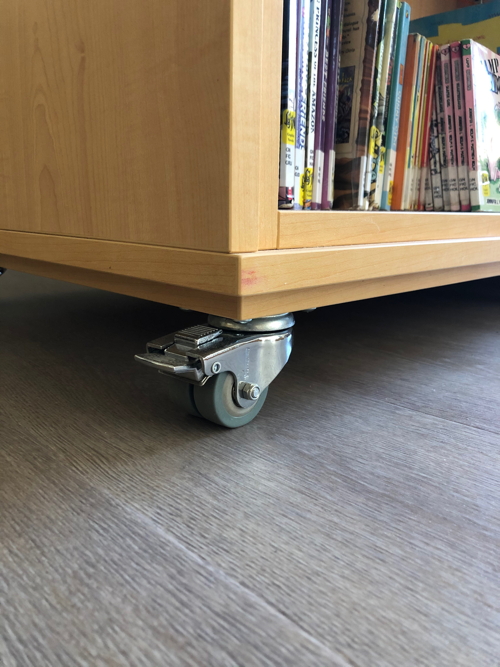
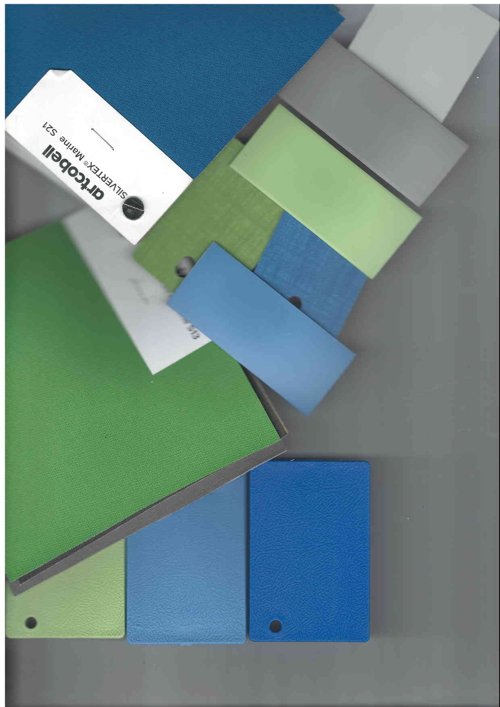
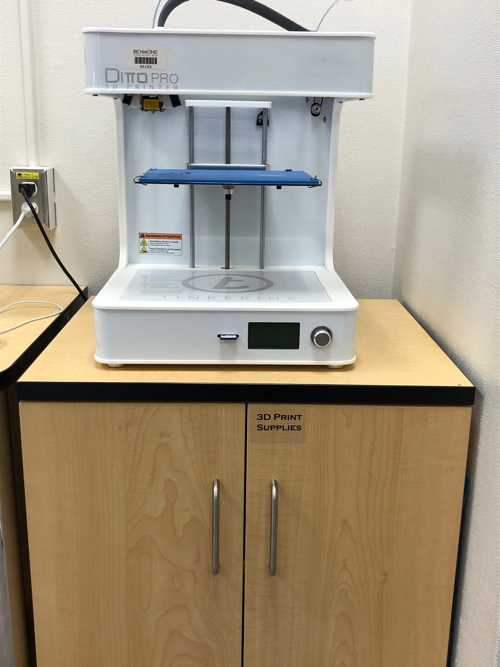
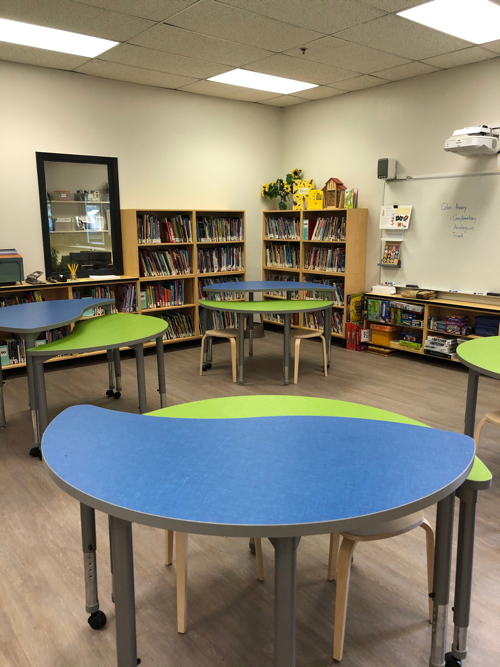
Spacious, filled with light, infinitely re-configurable, our library learning commons is a hub of student learning. And not just the students love it – district workshops and meetings are now a regular occurrence! This is a truly flexible space for all the diverse kinds of activities that today’s library learning commons facilitate.

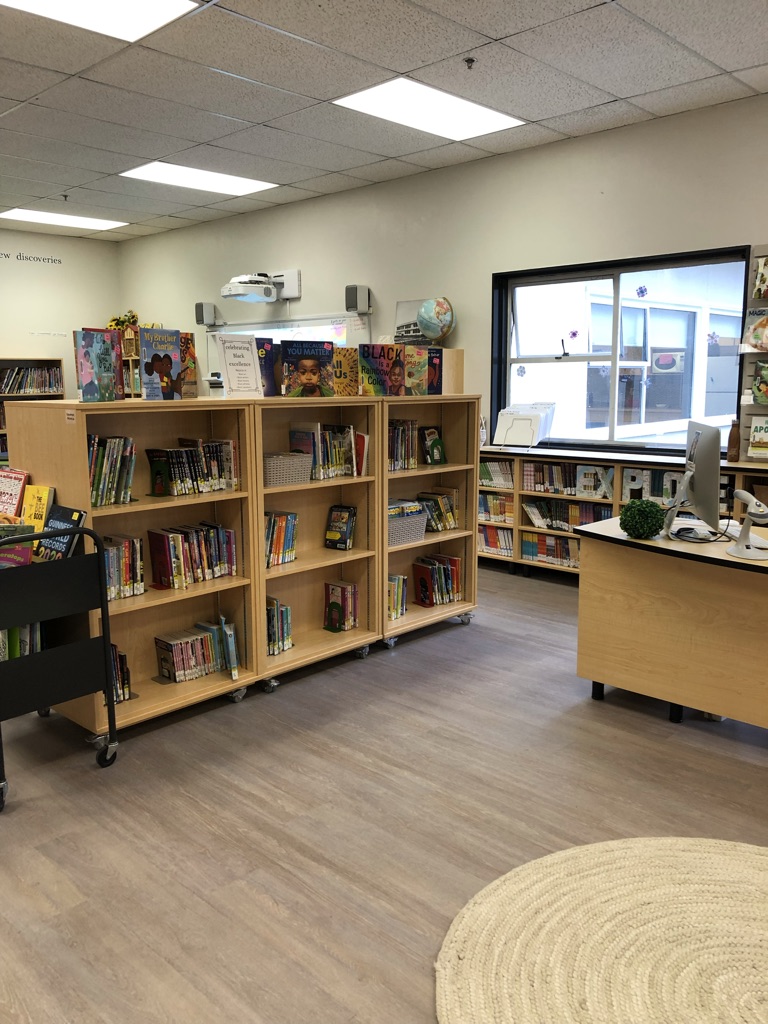
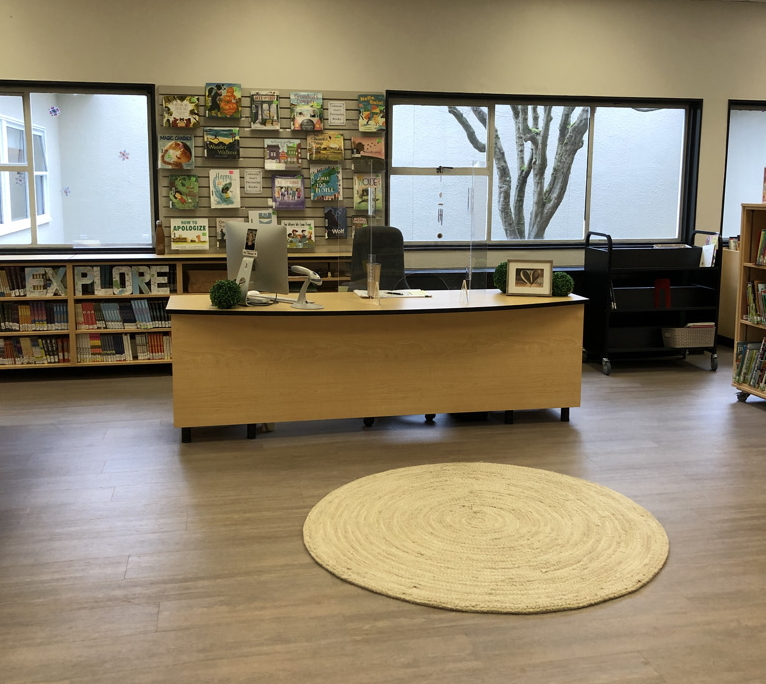
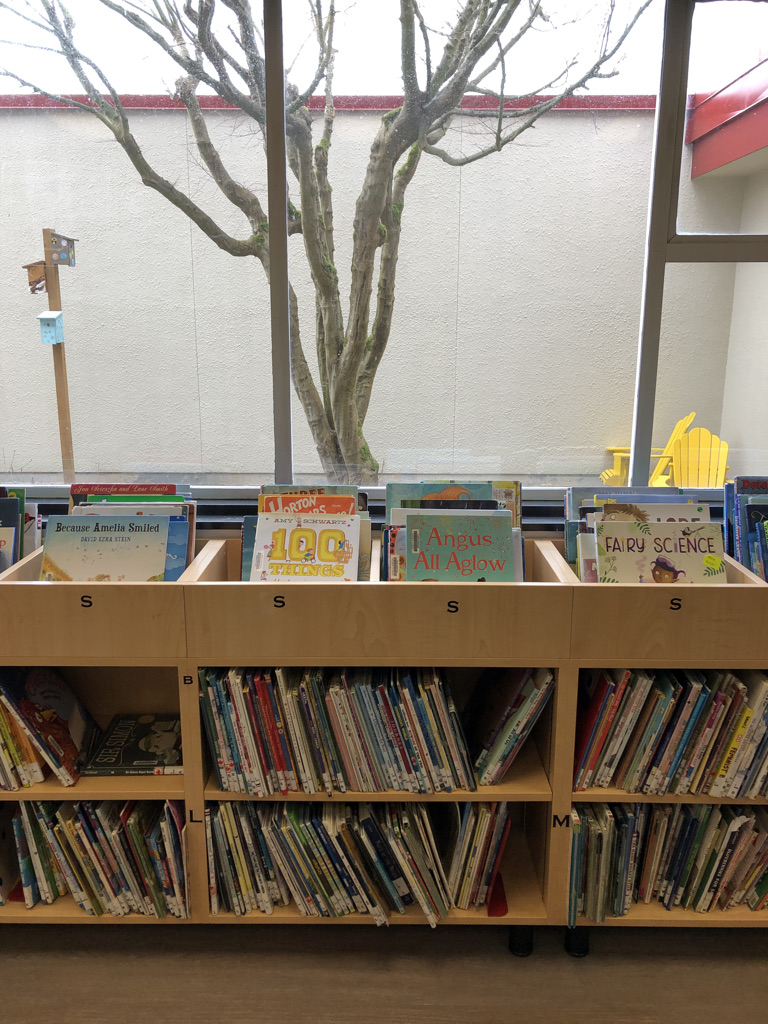
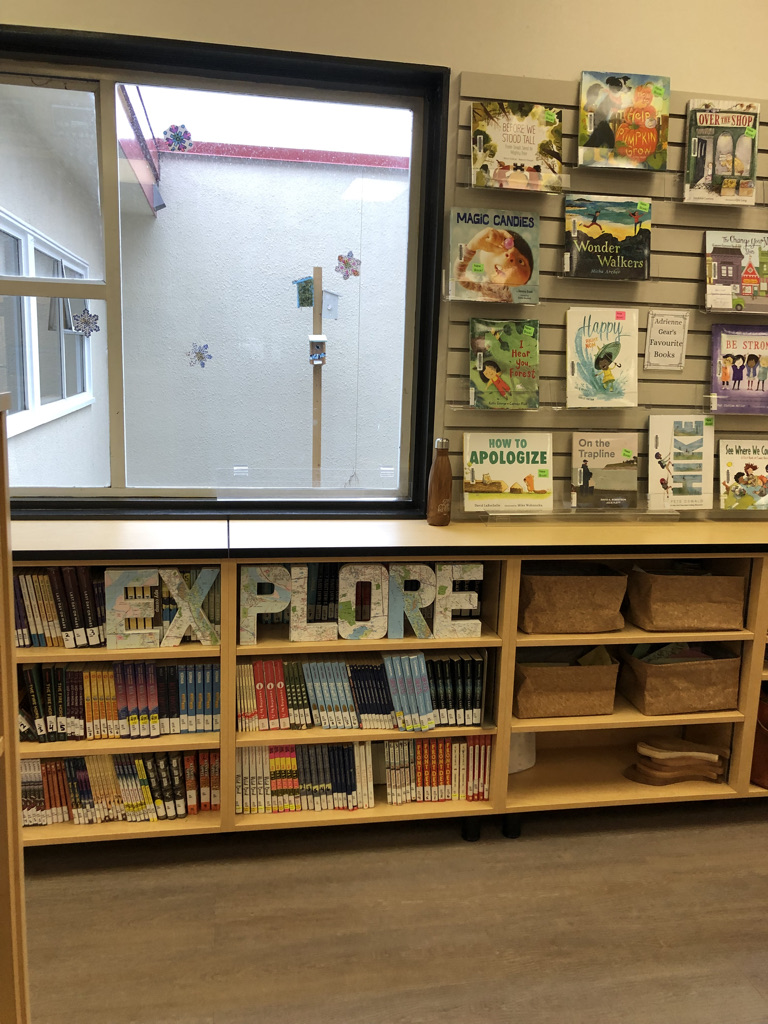
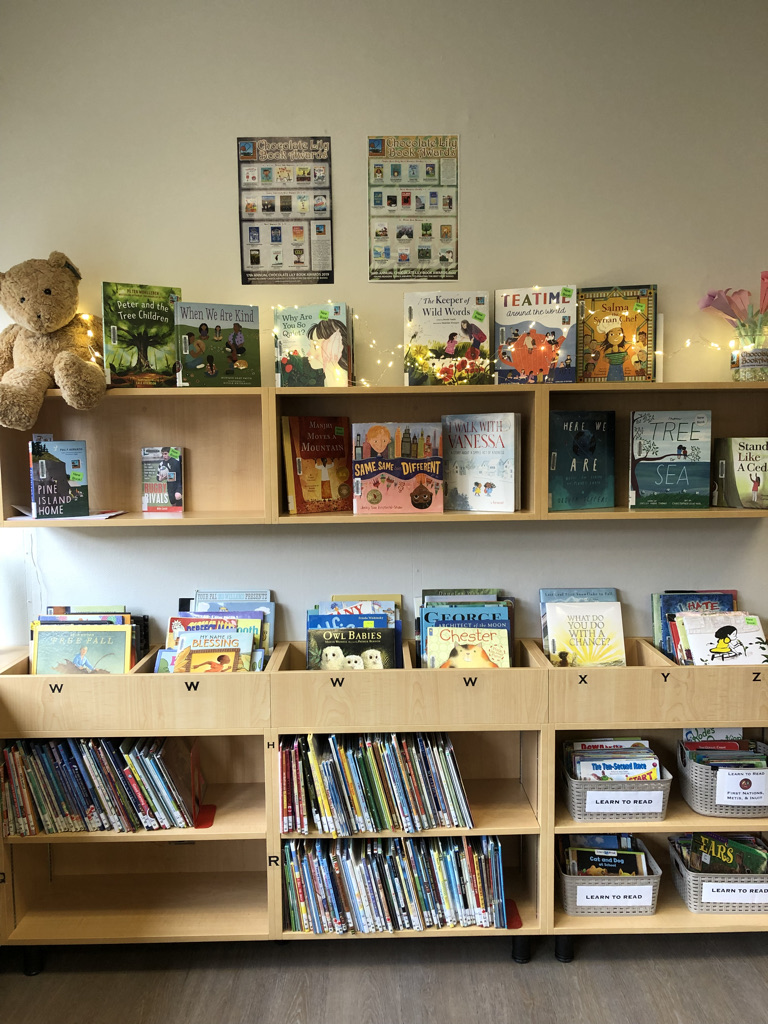
Front facing bookshelves engage our youngest readers. Our circulation of picture books has skyrocketed since this shelving was installed!
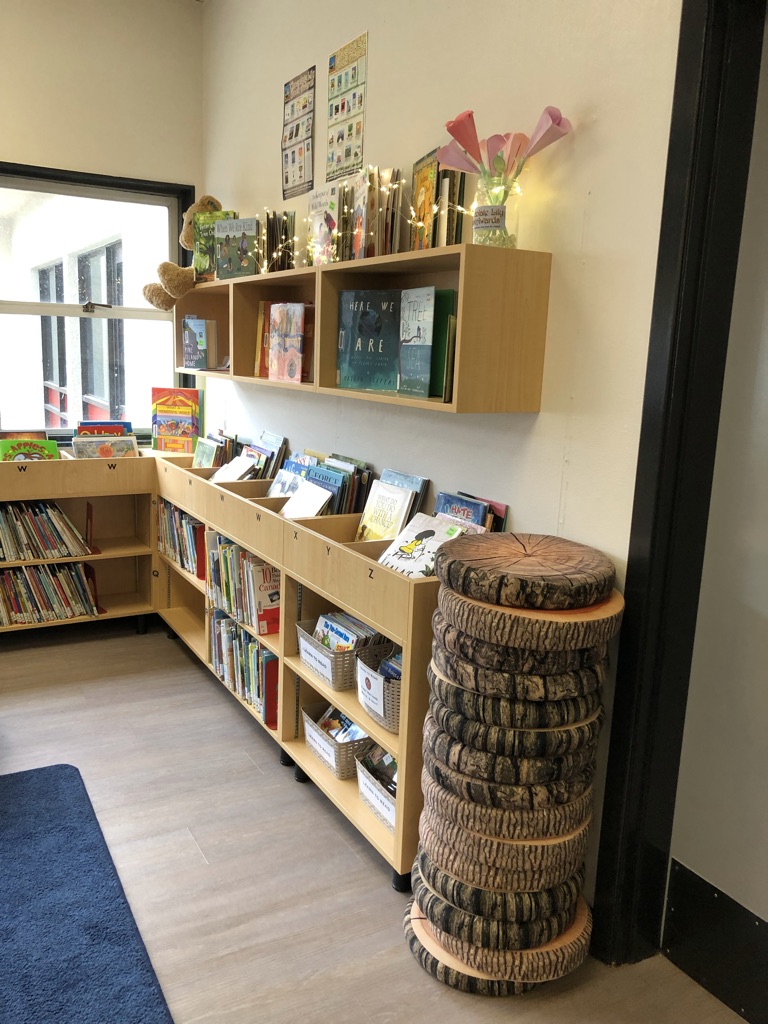
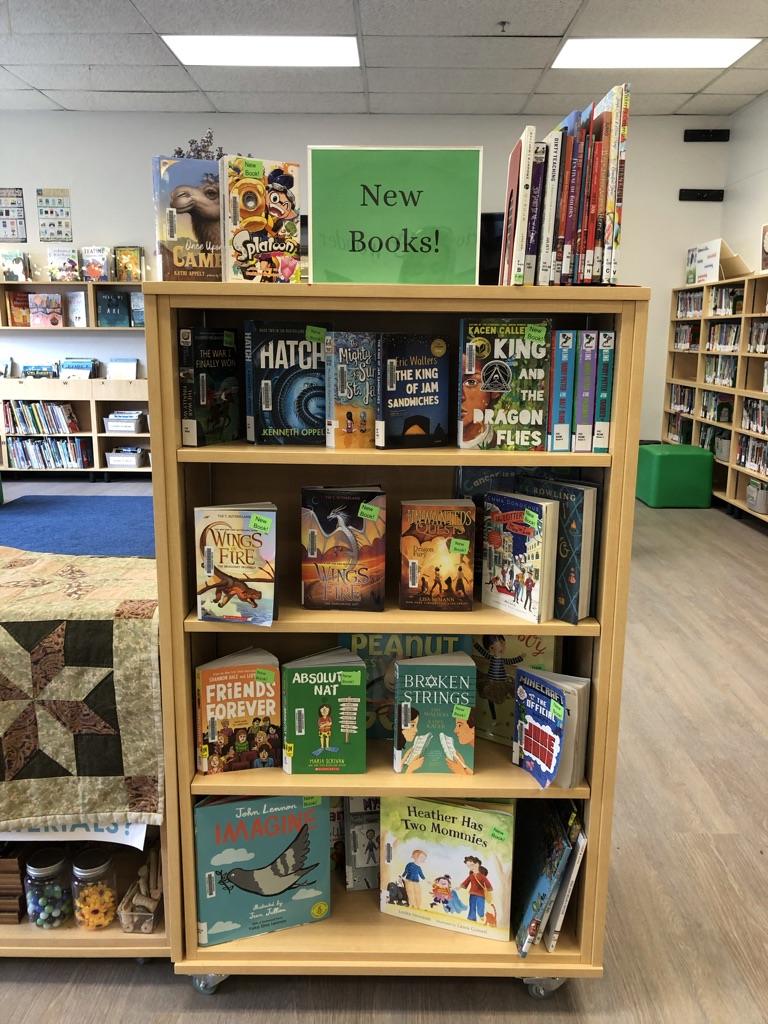
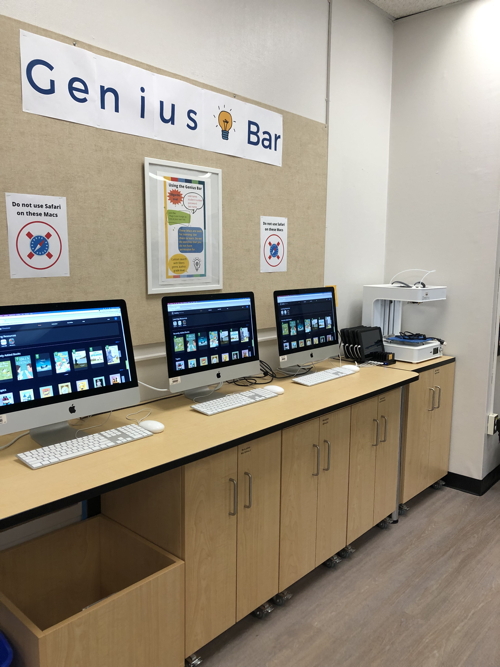
We love the result, and after almost one year of use the space has proven to be an environment which is truly welcoming to learners, engages hearts and minds, and which supports the design objectives of a library learning commons.
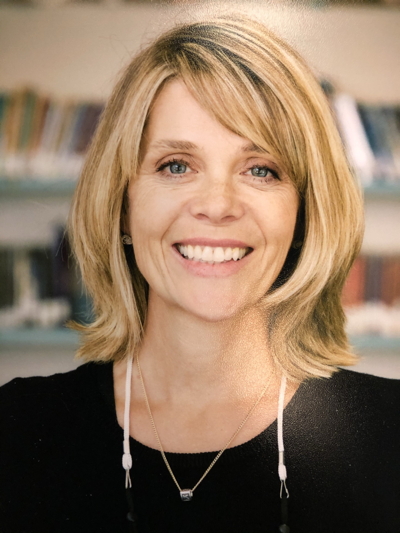
Kelly Johnson is still feeling new to the role in her fourth year as teacher-librarian after 20 years in a Montessori classroom. Initially trained as an archaeologist, Kelly spent time in Tonga and Fiji on excavations before finding her way to the joys of elementary school teaching. Summers you will find her at the family oyster farm in beautiful Desolation Sound, BC. Family, gardens, dogs, baking and books keep her happy and busy. Follow along on her LLC adventures @teacherkjohnson